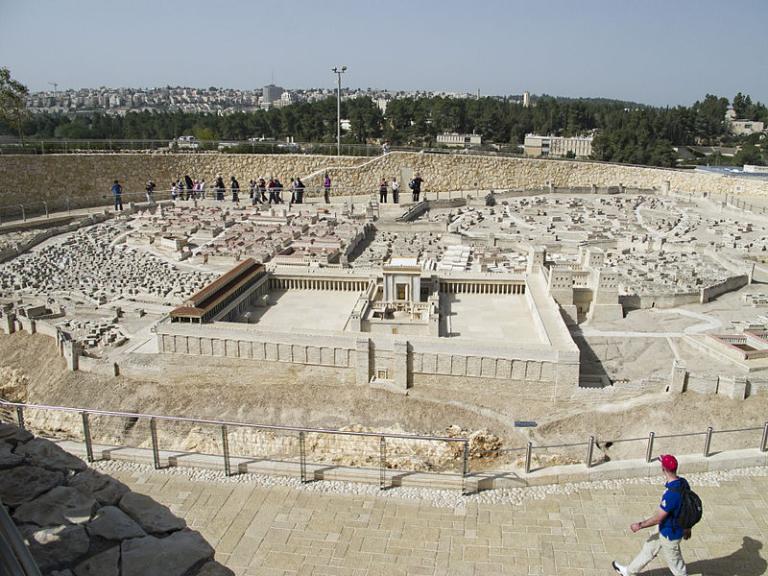
It was a great privilege tonight for our group to hear, through the good offices of Jack Welch, from an Interpreter author who is based here in Israel. He spoke to us here in the King David Hotel, where we’re staying.
What follows is the note that prefaced his October 2015 Interpreter article “The Temple: A Multi-Faceted Center and Its Problems”:
Editor’s Note: At the request of BYU Law Professor John W. Welch, Dr. Berman graciously provided this article for publication as an introduction to a series of lectures he will be giving in Utah on October 7 and 8, 2015. The first lecture will focus on the differences between the Tabernacle and the Temple, the second lecture will discuss recent findings linking inscriptions from Ramesses II to the sea account in Exodus, and the third lecture will touch on issues in biblical law. These lectures are co-sponsored by the Academy for Temple Studies, BYU Studies, the Ancient Near Eastern Studies Department in the David M. Kennedy Center for International Studies, the J. Reuben Clark Law School, and The Interpreter Foundation, and details can be found online. This article is adapted from The Temple: Its Symbolism and Meaning Then and Now(Eugene, OR: Wipf & Stock, first ed., 1995).
Abstract: One of the primary identities of the Temple is that it is the place of hashra’at ha-shekhinah, the site at which God’s presence is most manifest. It is no surprise then, that the Temple is the focal point of prayer. Yet, as the site at which God’s presence is most intimately manifest, the Temple is also the center of the nation in several major spheres of collective life. This centrality is exhibited in the structure of the Book of Deuteronomy. Chapters 12-26 depict commandments that are to be the social and religious frame of life in the land of Israel. Within this section the central shrine, “the place in which God shall establish His name,” is mentioned nearly twenty times. The Temple is cast as the center for sacrifices (ch. 12), the consumption of tithes (14:23-25), the celebration of the festivals (ch. 16), and the center of the judicial system (ch. 17). In this chapter we will explore how the Temple constitutes the national center for social unity, education, and justice. The concentration of activity and jurisdiction at the Temple, however, renders it prone to abuse, and in the second half of this chapter, we will probe the social and religious ills that emerged as an endemic part of the Temple’s existence.
And here is his biography, as it appears on the Interpreter Foundation’s website:
Joshua Berman is a professor of Bible at Bar-Ilan University in Israel and an Associate Fellow at the Shalem Center, a Jerusalem based research institute. Dr. Berman is the author of The Temple: Its Symbolism and Meaning Then and Now (Jason Aronson Publishers, 1995) which explores the theme of Temple across the Bible, and has drawn particular attention in Jewish and Mormon circles. He is also the author of Narrative Analogy in the Hebrew Bible: Battle Stories and Their Equivalent Non-battle Narratives (Brill Publishers, 2004), which explores the rhetorical conventions of biblical battle scenes and their implications for the messages of those stories. He is also the author of Created Equal: How the Bible Broke with Ancient Political Thought (Oxford University Press, 2008), named a National Jewish Book Award Finalist. He has published in such noted journals as the Journal of Biblical Literature, Vetus Testamentum, and Catholic Biblical Quarterly, and is an engaged scholar with a deep interest in sharing the fruits of scholarship across a wide spectum of public audiences. Dr. Berman attended Princeton University, where he received a B.A. in Religion, and holds a doctorate in Bible from Bar-Ilan University. He is also an orthodox rabbi, and received his ordination from the Israeli Chief Rabbinate. Dr. Berman, his wife and four children reside in Bet Shemesh, Israel.
Posted from Jerusalem, Israel










